The Skillful Craftsmen in Lingnan · The Guardians of Ancient Buildings | The Artwork Carved on Gray Brick
小如一颗荔枝,每颗荔枝皮上密布的突起小刺头都要一笔一笔雕琢;大如巨幅凤凰,从砖块拼接设计到羽翼发丝都细腻展现……
When it comes to a small litchi, the little spikes densely covered on each litchi rind need to be carved pen by pen. As for a giant phoenix, the whole image of phoenix has been exquisitely displayed from brick splicing design to the carving of wing and feather…
青砖黛瓦,经匠人的巧手雕琢,化作一幅幅传神的砖雕作品,重新赋予其昂然生命力。巧手的匠人唤醒了单调、笨拙的青砖,纵然没有靓丽的色彩,但独特的美感,一块砖里藏了一个世界,着实让人折服。
Gray bricks and gray tiles are transformed into vivid brick carving works and endowed with vigorous vitality by virtue of artisans’ exquisite carving techniques. The ingenious artisan awakens those dull and clumsy gray bricks with their unique beauty despite the lack of brilliant colors. There’s a whole world hidden in such a brick and it’s an awesome craftsmanship.
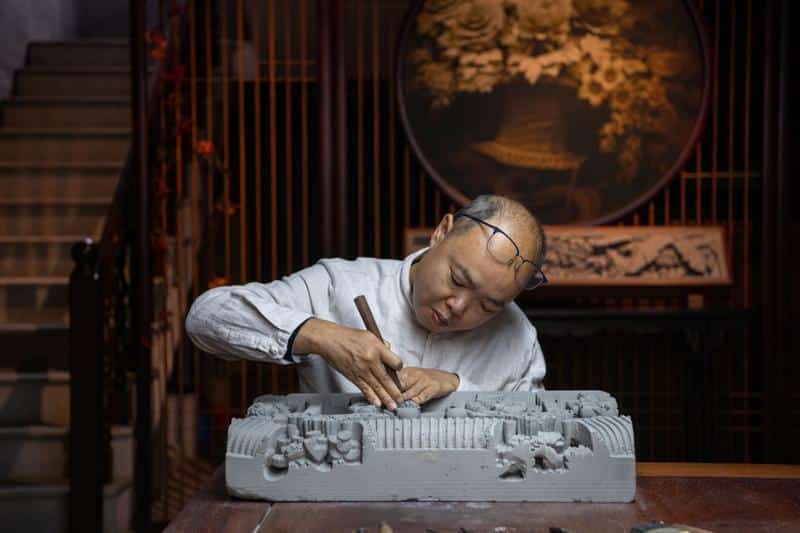
广州沙湾,广府望族聚居之地,明清以来便富甲一方。从前,富庶沙湾的祠堂、民居上的雕饰汇聚了广府工艺的精粹。砖雕大师何世良便是生于此地,自幼就浸染在这样一个环境中,带着好奇,他常常拿着砖头瓦片磨成各种各样的形状。15岁时,广府宗祠留耕堂启动修复工程,上初中的何世良经常便爬到墙上看师傅们做砖雕、木雕等修复工艺。
Shawan of Guangzhou, a place where notable families and great clans in the then Guangzhou Prefecture used to live, has been rich and influential since the Ming and the Qing Dynasties. In the past, the carved decorations on the ancestral halls and residential buildings in the rich Shawan embodied the essence of crafts in Guangzhou Prefecture. He Shiliang, a brick carving master, was born here. Immersed in such an environment since childhood, he used to grind bricks and tiles into various shapes out of curiosity. When he was 15 years old, Liugeng Temple, a Cantonese ancestral temple, started its restoration project. He Shiliang, who was in junior school then, often climbed up the wall to watch masters carving bricks and wood or carrying out other restoration techniques.
至今,何世良还记得恩师胡枝的一句话,“艺术就是要创造出独一无二的作品,才能成为纯粹的工匠,而不是机械化的工人”。
Till now, He Shiliang still bears the words of Hu Zhi, his teacher, in mind, “Only by creating unique works, can an artist become a pure artisan rather than an inflexible worker.”
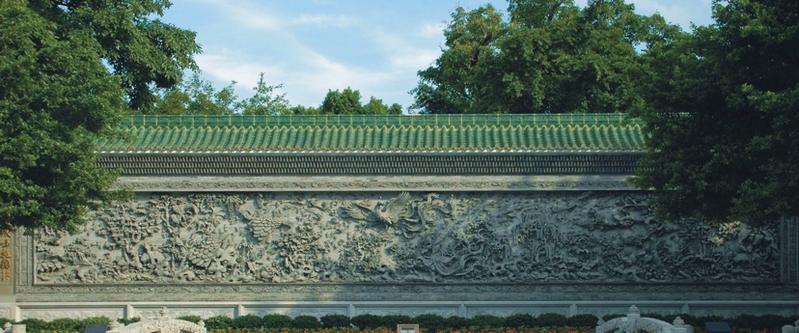
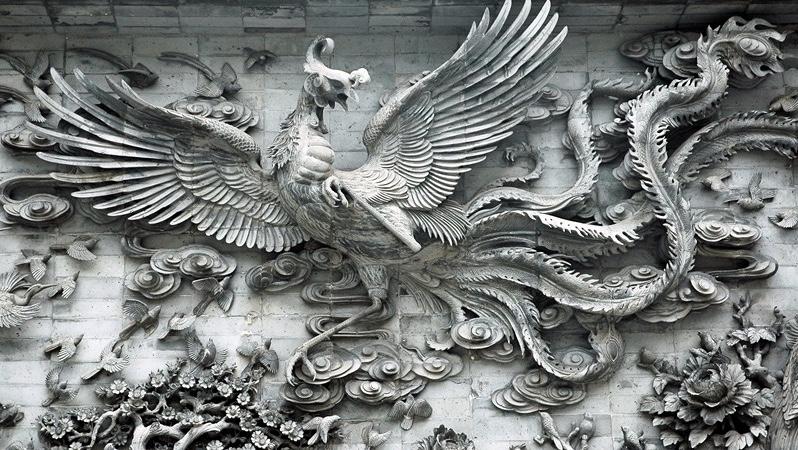
2016年,何世良在全国砖雕艺术大赛中荣获全国“砖雕大国工匠”称号,随后又被评为广东省传统建筑名匠。
In 2016, He Shiliang won the title of “National Brick Carving Artisan” in the National Brick Carving Art Competition, and later evaluated as a Master of Traditional Architecture in Guangdong Province.
青砖,是砖雕艺术的承载者。要想在砖块上雕刻如此精细的图案,选材很重要。不同于石头、木头等天然的材料,砖块是加工而成的,品质参差不齐。
Gray bricks serve as the carrier of brick carving art. Material is of peculiar importance for artisans to carve such an elaborate pattern on a brick. Different from those natural materials like stone or timber, bricks are machined and various in their quality.

砖雕的选材上有“用旧不用新”的说法,“出窑新砖火气犹存,雕制时往往是刚有余、柔不足,难以达至所预期的艺术效果,而久经岁月洗礼的优质青砖,雕来却出奇的古拙淳朴、特富韵味。”何世良解释道。
There is a saying on material selection for brick carving, “one would rather use an old brick than use a new one.” That is because “the internal heat still remains in new bricks from a kiln. Most of them are too hard to carve in and not soft enough for polishing. Therefore, artisans cannot realize the expected artistic effects on new bricks. On the contrary, the quality gray bricks weathered by long time can be carved into surprisingly natural works with rich and lasting appeal.” Mr. He explained in this way.
雕刻,就如刻刀在青砖上“舞蹈”,“我拿过一块青砖,手里一掂、皮肤一触,就知道这块砖适合雕刻什么。”何世良说,“身边堆着青砖,雕刻时没有人打扰,这样一种‘忘我’的状态,就是创作的最好状态。”
Carving works like a “dance” by carving knife on a gray brick. “As soon as I hold it in my hand and touch it with my skin, I can figure out what pattern this gray brick can be carved,” Mr. He said, “When I carve gray bricks, there is no person around me but a pile of bricks. Such a “no-ego” state is the best state for composition.”
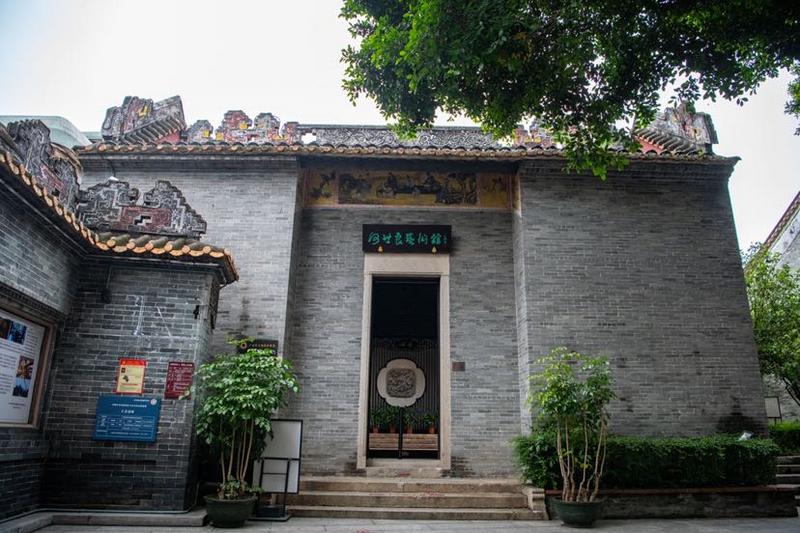
何世良艺术馆位于沙湾古镇安宁广场一旁,原是古镇的传统建筑——仁让公局,始建于清代,沙湾古镇通过对传统建筑进行“活化”利用,重新将它打造成以砖雕、木雕艺术为主题的何世良艺术馆。
He’s Art Museum is located next to Anning Square of Shawan Ancient Town. It was originally Renrang Public Office, a traditional building built in the Qing Dynasty. Shawan Ancient Town “revitalized” this traditional building and re-built it into He Shiliang Art Museum themed on brick and wood carving.
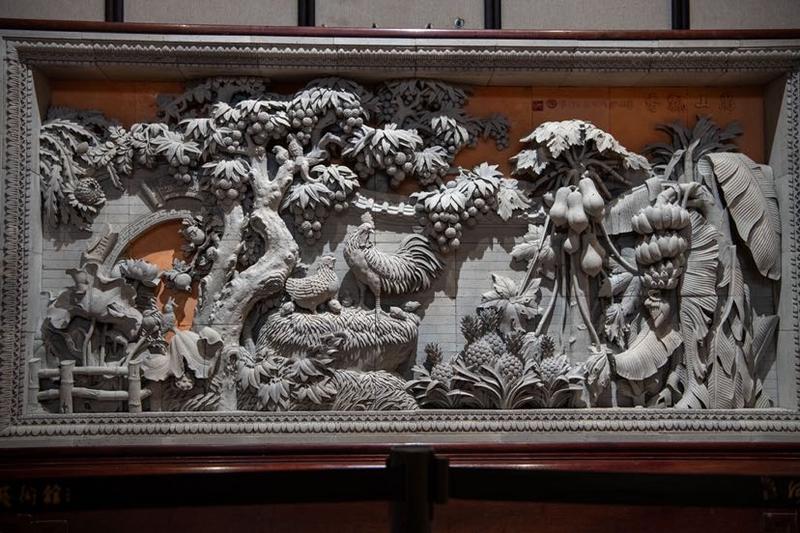
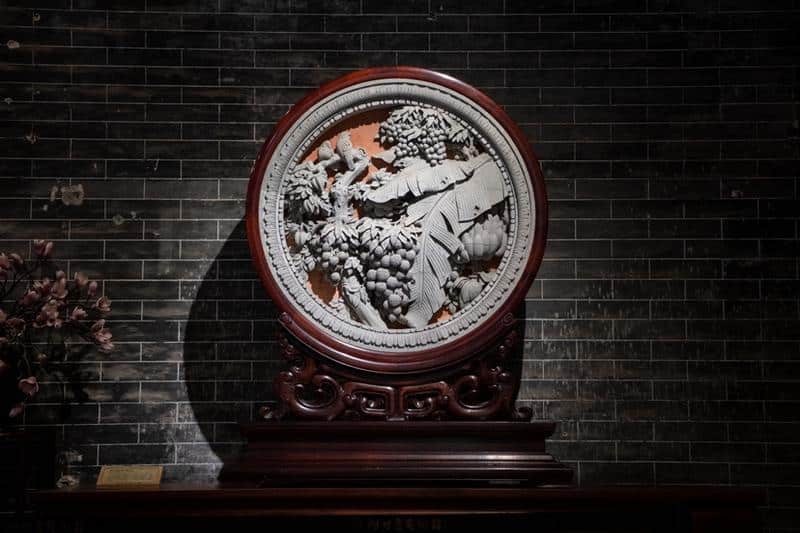
较之北方砖雕的粗犷、浑厚,岭南砖雕更显纤巧、玲珑的特点,何世良说,“岭南砖雕宛如剪纸一般细腻。特别适合雕刻岭南荔枝、红棉这类精细植物。”
Compared with the rough and thick styles in the north brick carving, Lingnan brick carving is more delicate and exquisite. According to Mr. He, “Lingnan brick carving is as exquisite as paper-cuts, so it’s especially suitable for patterns of delicate plants, such as Lingnan litchi and kapok.”
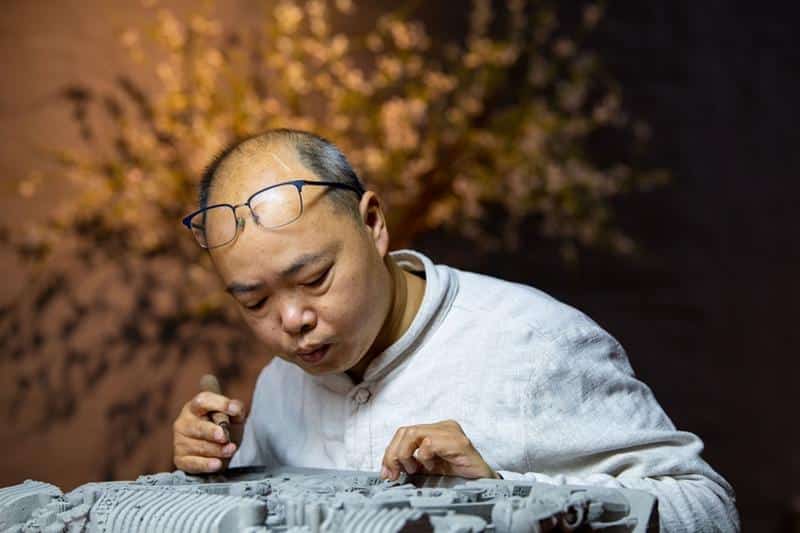

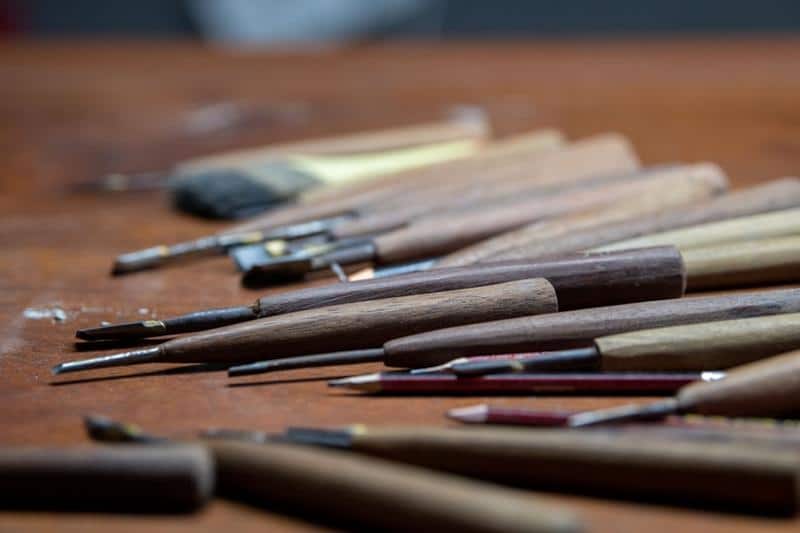
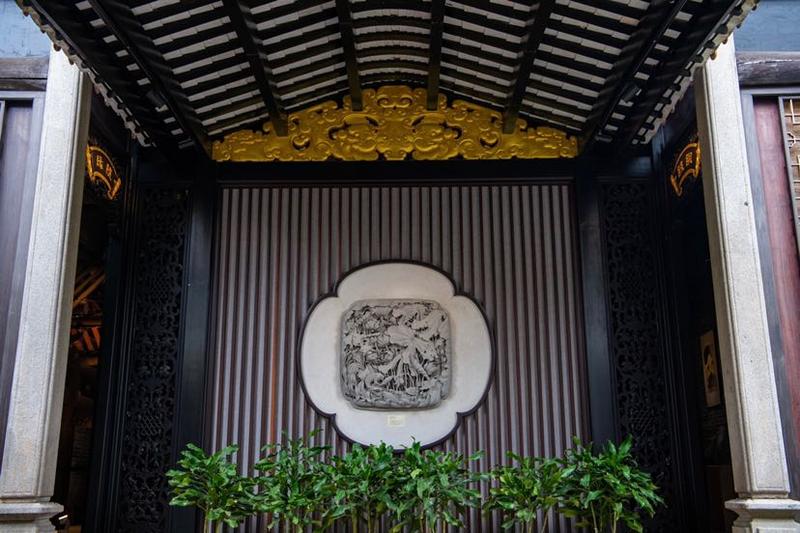
回归到砖雕的保护与传承上,何世良觉得,传承这门工艺最关键的是守住品质以及推广传统工艺的审美。2001年,何世良创办起工艺美术工作室,收徒传艺。如今,他的徒弟已经有150人左右。
When it comes back to the protection and inheritance of brick carving, Mr. He believes that the key to inherit and carry forward this craftsmanship is to adhere to the quality and promote the aesthetics concerning traditional craftsmanship. In 2001, Mr. He set up an art and craft studio to pass on his skills by teaching students. Today, the number of his apprentices has reach about 150.
何世良认为,“岭南砖雕是一门既老又新的手艺,必须让它向着群体化、产业化发展,并形成良性竞争,促进精品的创作,惠及普罗大众。这不仅是社会责任的驱使,也是一个机遇与困难并存的挑战。”
In Mr. He’s opinion, “Lingnan brick carving is a both old and new craftsmanship. Therefore, it must develop towards the general public, form its industry and thus establish a benign competition atmosphere, so as to promote the creation of high-quality works and benefit all. This is not only a drive force out of social responsibility but also a challenge with both opportunities and difficulties.”
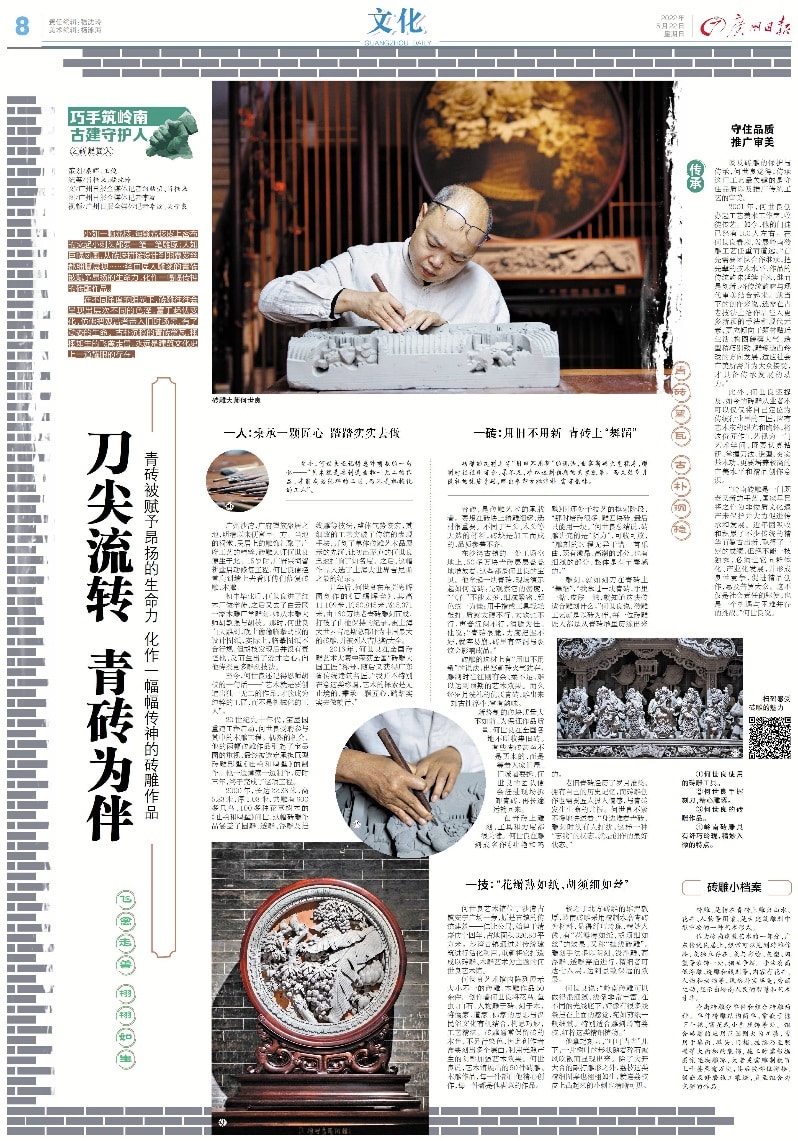
来源:广州日报
Source: Guangzhou Daily
统筹/秦晖 肖桂来
Report planning: Qin Hui and Xiao Guilai
作者:何钻莹、肖桂来、李波
Author:He Zuanying、Xiao Guilai and Li Bo











